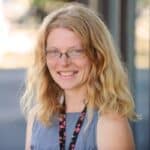What Should I Include in My Portfolio?
A beginning investor can easily be overwhelmed by the variety of investments and retirement strategies available. When I started a 401(k) program for a small company I worked for, only one person, me, made any elections for several months. Here's a bit of helpful knowledge to make those choices a little easier for you than they were for me.
First, an indelicate question:
Before we can start making suggestions we need to ask: how much money do you have?
- A few thousand dollars or less You'll want to start with something easy, but you'll still want to stay diversified. Most investment advisors suggest you leave 10 to 30 percent, depending on your age and risk tolerance, of your portfolio in cash or a money market fund so it will be “liquid” (in other words, so you can get the money out easily in an emergency). But, you have so little you may not want to worry about this just yet. If it were me, like Jack Bogle of the Vanguard Group, I would begin by putting everything (or almost everything) in CDs or a stock market index fund. It's fairly low-risk and is recommended by many financial pundits for beginners.
- Around $10,000 Congratulations! What a milestone. If you have enough to meet the minimum investment for mutual funds and bond funds, you can start figuring out your perfect portfolio allocation, which will probably consist of some stock funds, some bond funds, and that 10 to 30% left in a money market fund, CDs or cash. At this level you're probably sensible to avoid individual stocks and bonds (I'm not a fan of very risky investments like derivatives and commodities), just because you don't really can't afford to lose the chunk of savings you'd lose if you bought even 20 shares of, say, Apple, and it had a big price plummet.
- In the mid-five-figures Once you get over $30,000 or so, you might find you have a yen to start investing in individual stocks. Most investment pros suggest keeping it to a small percentage of your portfolio, say, 10 or 15 percent. At this point, you can probably bear the inevitable dips and soars in the value of your portfolio as your chosen stocks endure good and bad news. It won't have a huge impact, as it's a relatively small amount overall; yet you'll still have enough to buy more than a few shares of any one stock.
- Over $100,000 If you're very brave, you may want to invest five or 10 percentage points more in individual stocks. And you should start thinking about regular portfolio rebalancing — moving a portion of your portfolio from stocks to bonds or vice versa — to maintain the allocation that fits your risk tolerance.
- A million dollars, or more You know the old joke: “Where does an elephant sit?” “Anywhere he wants to!” If you've acquired this through savings and investing in those stock and bond funds we all love to love, well, you have learned all the lessons I can teach you already and should go forth and pick your portfolio contents without my input. All the investment advisors would remind you to keep diversified and continue to be avoidant of the same risks that concerned you when you only had $10,000 in savings. But if you are interested in investing in real estate or a small business, this size of portfolio gives you the room to put 10 or 20 percent to work outside the securities markets — and have it buy more than a lean-to or a food cart. If you have, by the way, acquired this money via inheritance or other windfall, I would suggest sticking with the “mid-five-figures” allocations until you're thoroughly comfortable with this formidable amount of money; at least for several years.
And another indelicate question: How old are you?
As you near retirement, you will want to start putting some of your portfolio in safer investments. Robert Brokamp from the Motley Fool suggests, “a retiree should have five years' worth of income… sequestered from stocks and in something super-safe,” like money market funds or CDs. The percentage of your portfolio to which this refers will depend on the size of your portfolio and how much income you have decided you'll need each year.
And this will be the time, finally, when you'll want to begin to sell stocks if you've faithfully subscribed to the “buy and hold” philosophy. Those smart investments will have, hopefully, paid off and you can enjoy your retirement. You have arrived!
Become A Money Boss And Join 15,000 Others
Subscribe to the GRS Insider (FREE) and we’ll give you a copy of the Money Boss Manifesto (also FREE)

